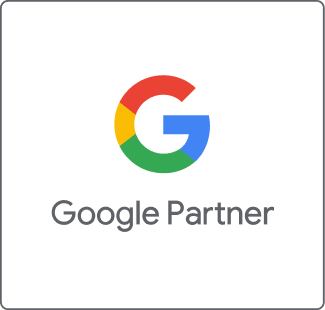As digital marketers, the way Google's algorithm is always changing can both confuse and interest us. It's amazing how much information we can learn about how search rankings work thanks to the recent leak of Google's algorithm papers. Let's look at how PageRank has changed over time, how it can tell the difference between different business models, and some of the most important parts that could change the way SEO techniques are used.
The Evolution of PageRank
Pages ranked by Google's PageRank have always been based on how many links they have. Like the web and people, PageRank has changed over time.
Neural Search and PageIQ_NS
Google has changed the way it ranks websites in search results by switching from standard PageRank to PageRank_NS. PageRank_NS, where "NS" stands for Neural Search, uses cutting edge AI and machine learning methods to look at the material. This technology counts links, looks at the quality of the material and how relevant it is to the search query.
With Neural Search, Google is better able to figure out what web pages are trying to say and why they are there. This lets it prioritise results that are both popular and relevant to the user's needs. This change is part of a larger trend in search technologies to understand the semantic parts of web content in order to better match user meaning instead of just matching keywords and link popularity.
Seven Types of PageRank
Google's announcement that it has seven different kinds of PageRanks shows how complicated and advanced its search engines are right now. These versions are useful for different parts of a webpage's worth and importance.
- ToolbarPageRank: This popular public score gave a quick look at how important a page was based on direct links, but it is no longer used because it was too simple and easy to cheat.
- RealtimePageRank: A dynamic measure that adjusts more frequently based on real-time link data and user interactions.
- PersonalizedPageRank: Tailors results based on individual user behaviours and preferences.
- TopicSensitivePageRank: Adjusts rankings based on the relevancy of pages to specific topics, which helps in delivering more targeted search results.
- GeoSpecificPageRank: Variations in PageRank that consider the geographical relevance of content to the user’s location.
- SocialPageHighQuality: A version of PageRank that integrates signals from social media platforms, considering both the popularity and the credibility of content within social networks.
- DomainAuthorityPageRank: Focuses on the authority of entire domains, aggregating the trustworthiness of individual pages to assess the overall credibility of websites.
Each of these PageRank types gives Google a different way to look at web pages, which helps it give people more accurate, relevant, and useful search results.
This variety of sorting systems makes sure that the search engine can understand how complicated the modern web is, with its many types of content, users' different needs, and information landscapes that change quickly.
Identifying Business Models
Because Google uses such complex algorithms, it can also sort websites into groups based on how they make money. This feature lets the search engine fine-tune its ranking systems to fit the unique qualities and needs of the different kinds of material and services these sites offer.
By finding out if a website is mainly a news hub, an e-commerce platform, a personal blog, or a video hosting site, Google can use more specific criteria to make search results more relevant and useful for users.
Types of Business Models and Their SEO Implications
- News Websites: These sites are often given more weight if they are up-to-date and reliable. Because people want quick and accurate information, Google's algorithm may give news stories more weight in search results when they are very relevant or when big news events happen. News sites also have to follow certain rules, such as reporting original stories and checking facts, which are very important for getting better rankings.
- Personal Blogs: When putting personal blogs into groups, it's important to remember that they are informal and often subjective. Google might rank these differently depending on things like how engaged users are, how personalised the content is, and how deep it is. These can offer personal stories or insights that aren't available on business websites.
- E-Commerce Sites: When it comes to e-commerce sites, things like user trust, transaction security, and the quality of product descriptions are very important. Google's system rates and ranks these sites based on user experience scores, page load speed, mobile friendliness, and the quality of customer service information. These are all important factors for people who want to buy something.
- Video Sites: Video content platforms are judged on things like the quality of the videos, how relevant they are to the search question, how engaged the users are (number of views, likes, and comments), and how well the videos are tagged and described. Google knows that people who are looking for video content have different wants and needs than people who are looking for text-based content.
Tailored Ranking Criteria
By distinguishing between these business models, Google can apply model-specific ranking signals:
- For news websites, the most important things are how fresh the material is and how reliable the source is.
- It's possible that niche blogs or personalised searches that value first-person experience and opinion will rank higher than other blogs.
- E-commerce sites are carefully checked for their user interface, security features, and ability to work on mobile devices, because trusting users is important for deals.
- To rank well, video sites need to show that they are engaging and relevant. Things like video resolution and the presence of closed captions affect accessibility and user choice.
This customised method not only makes the search experience better by showing users the most relevant results, but it also pushes website owners from all kinds of industries to make their sites work better with Google's understanding of their unique business model. This makes the internet a competitive place where quality, user happiness, and search engine visibility are all closely linked.
Key Components of Google's Algorithm
NavBoost
One part of Google's system that looks at how people use a website is called NavBoost. It measures how users move around and interact with the site by looking at things like the bounce rate, the number of pages viewed in a session, and the amount of time spent on each page. Websites that make it easy for people to navigate and encourage them to stay on the site longer are more likely to get a better NavBoost score, which can help their overall search ranking.
NSR
Google has made a big step forward in its ability to understand material with Neural Search Ranking (NSR). NSR uses machine learning to judge the quality and relevance of material by looking at more than just the keywords in it. This method can figure out what a user is trying to find and match that with the best content, making sure that the best content that meets the user's needs is ranked higher.
ChardScores
ChardScores are used to judge how new and trustworthy material is. This part of the programme checks how recently the content was changed and how reliable it is from a historical point of view. A website's ChardScore goes up when it gets regular changes and consistently high-quality information. This affects how visible it is and where it ranks in search results.
Sitewide Authority Metrics
Google uses sitewide authority measures to figure out how trustworthy and credible a website is as a whole. Some of these measures are Chrome browser traffic signals, which can show how popular a site is and how engaged its users are. Sites that get and keep a lot of Chrome users may be thought to have good content, which gives them a better authority score. These measures also look at how consistent the quality is across all of a website's pages. Sites that keep high standards across the board, not just on a few high-performing pages, are rewarded.
Advanced Embeddings and Scoring
Page and Site Embeddings
Embeds are complex models that Google uses to figure out how pages on a website and across the web are related to each other in terms of themes and context. Site embeddings look at the content of each page to see how well it fits with the main ideas of the site. Page embeddings do the same thing. This helps Google figure out if a page is related to the main topic of the site, which can affect its reputation and relevance scores.
Click Metrics
Click measurements are very important for figuring out how active and happy users are with a page. One of these variables is click-through rate (CTR), which measures how often people click on a link after finding it in search results. More click data could include a look at "good" clicks that lead to long-term engagement vs. "bad" clicks that send people back to the search results right away (bounce). The quality and relevance of the material are immediately judged by these exchanges, which affects how high it ranks in search results.
Google's use of these complex algorithms and data not only makes search results better and more relevant, but it also encourages webmasters to focus on making content that is user-focused, interesting, and trustworthy. This all-encompassing plan makes sure that the search experience will always be changing to meet the needs of users and high standards for content quality.
The Intriguing PageQuality (PQ) Metric
Google's addition of the PageQuality (PQ) metric is a big change in how the search engine ranks material. PQ doesn't just look at keyword density or inbound links; it also looks at how much work went into making the material.
High PQ scores are given to content that shows depth, study, and usefulness. This encourages creators to make resources that are full of useful information. This metric looks at a number of factors, including the use of multimedia, the originality of the information given, and the general presentation. The idea is to reward material that not only gets people's attention but also keeps it by giving them real answers to their questions.
Topic Borders and Authority
Google's algorithm now uses SiteFocusScore and SiteRadius to figure out how authoritative a website is on a certain topic. SiteFocusScore looks at how focused a site's content is on its main topics and rewards sites that regularly cover those themes or topics. SiteRadius checks how far each page's main topic is from the site's main topics. This helps you figure out how relevant and focused the content is.
Websites that stay focused on a few major topics are more likely to be seen as reliable sources in those areas, which makes them more visible in searches related to those topics. This method encourages website owners to create a clear, focused content plan that makes their site more trustworthy and relevant.
Image Quality Signals
In its most recent algorithm updates, Google has put more stress on image quality and how visuals can keep users interested. Images that are high-quality and important can make the user experience much better by adding context and visual appeal to the text.
Google rates images by their resolution, how well they fit with the text next to them, and how much engagement they get, like clicks and time spent watching. Using optimised, high-quality images as part of a website's content plan is now necessary for both making the site look better and making it rank higher in search engines.
Host NSR and SiteChunks
Host NSR (Neural Search Ranking) and the idea of "sitechunks" are a more detailed way to judge the quality of a website. In order to give a full number, Host NSR looks at the quality of different parts, or "chunks," of a website. This lets Google get a better sense of the quality of the content on a deeper level, figuring out which parts of a site are doing well and which ones might be lowering the quality overall.
Understanding and optimising each chunk can help big websites, especially ones with a lot of different types of content spread out over many pages, improve quality and search engine performance.
Practical SEO Insights from the Leak
The recent leak has provided valuable insights that can be directly applied to SEO strategies. Key recommendations include:
- Optimise for NavBoost: Improve the site's layout to get people more involved and make them happier. NavBoost likes it when sites are well-organised because it makes people want to look around more.
- Maintain Topical Relevance: Make sure that the content you post is related to the main topics of your site. SiteFocusScore and SiteRadius can help you make sure that your content stays within the topics you choose.
- Regular Content Updates: Because Google likes it when sites keep their content fresh, they need to update their content often to stay current. This means adding new information to old posts, updating old posts, and regularly posting new content that follows current information and trends.
- Consistent Quality Across the Site: Aim for all of your pages to have good information. Different levels of quality can hurt your site's general ranking, so it's important to make sure that all of your content meets the same standards.
- Webmasters can better align their SEO practices with Google's latest algorithm changes by using these tactics together. This will lead to higher search engine rankings and more engaged users.
Conclusion
The latest leak gives us a unique look into how Google's search algorithm works, which shows us both problems and new chances. It's important for SEO experts and digital marketers to understand these findings. Businesses can improve the performance of their websites and get more people to interact with them by changing their tactics to match Google's complex ranking systems.
Get in touch with Xugar right away if you want to use these insights to improve your online profile. Modern SEO, Google Ads, and social media marketing are what we do best. Social media marketing, Google My Business management, retargeting, and Microsoft Ads are just a few of the many services we offer.
Besides web development, we also do app development, special development for e-commerce platforms like Magento, and web development. Working with us will make sure that your digital marketing plans are always up-to-date and optimised to meet the new standards set by Google's search engines.









